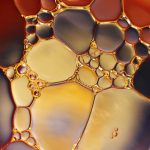Recovering Rare Earth Elements from Consumer Waste with Microbes
As we’ve discussed in previous blog posts, recycling and repurposing rare earth magnets is important. Rare earth elements used for certain types of energy, advanced vehicles, and electronics while existing in high concentrations around the world, they are not found in deposits that are easily exploitable due to their geochemical properties and the current geopolitical state. Because of this, researchers have studied various ways to recycle permanent magnet materials over the years. Most recently, a team from the Critical Materials Institute—led by Lawrence Livermore National Laboratory—found a way to increase the nation’s supply of rare earth materials: microbe beads.
The team created a biosorbent material that can bind and concentrate heavy metals in various environments. This microbe-embedded polymer—specifically, an E. coli biosorbent—was placed within a permeable polyethylene glycol diacrylate hydrogel. What resulted were microbe beads that selectively extract rare earth elements from a liquid that is passed through electronic waste. The best part? These microbeads are reusable! They were tested after nine adsorption/desorption cycles and maintained their adsorption capacity.
According to the team, the microbeads facilitate high-capacity recycling without complex and expensive synthesis due to their ability to synthesize and display high-density adsorption groups. This method of recycling could be used to recover rare earth materials from products that use neodymium magnets (like the ones sold at Apex), such as cell phones, hard disk drives, wind turbines, household electrical appliances, and even hybrid and electric vehicles.
While rare-earth magnet recycling is limited, the research team is hopeful that their process makes recycling more attainable and sustainable. To stay up-to-date on rare earth element recycling advancements or other break-through magnetic discoveries, browse through the magnet in the news section of our blog.

